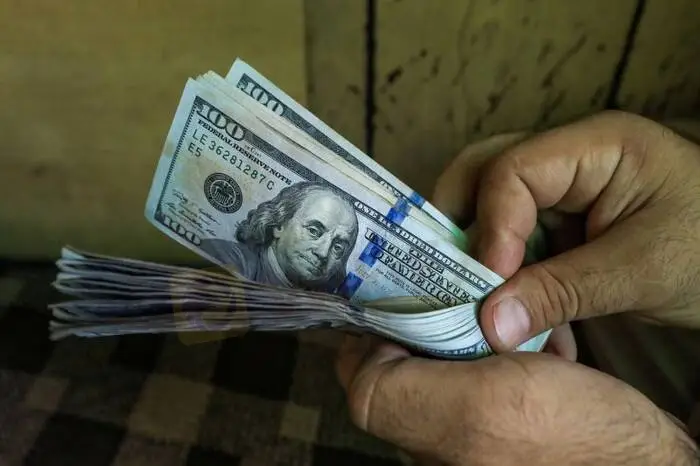简体中文
繁體中文
English
Pусский
日本語
ภาษาไทย
Tiếng Việt
Bahasa Indonesia
Español
हिन्दी
Filippiiniläinen
Français
Deutsch
Português
Türkçe
한국어
العربية
Yen shoots for best month in years as shorts scarper
Abstract:The dollar languished near a six-week low to the yen amid a sharp retreat in Treasury yields after investors interpreted a shrinking U.S. economy as one more reason for the Federal Reserve to ease its foot off the tightening pedal.
The Japanese yen headed toward its best month in almost three years on Friday as growth worries have driven U.S. yields sharply lower and squeezed speculators out of crowded short yen positions.

Waves of buying lifted the yen about 1% in the Asia session, extending Thursdays gains. It is up 2% for July and touched 132.76 per dollar, a six-week high.
The yen often tracks moves in Treasury yields, particularly the 10-year yield. A wide gap against anchored Japanese yields has made it attractive for Japanese investors to own U.S. bonds and for others to short the yen against the dollar.
But that gap has narrowed about 30 basis points in July, the sharpest move since March 2020, as signs of both U.S. growth and interest rate rises slowing rallied Treasuries.
On Thursday data showed the U.S. economy unexpectedly contracted last quarter and on Wednesday the Federal Reserve noted a slowing economy could slow interest rate hikes.
“The weak growth data makes people think that it will stop the Fed from raising rates too fast,” said Masafumi Yamamoto, chief currency strategist at Mizuho Securities in Toyko.
“Some traders are reducing their positions betting on a weaker yen because of the reducing risk of rate hikes.”
The yen is on course for its best month in six years against an ailing euro. While it is up this week, the euro is 2.6% lower on the dollar for July and faces its next test with eurozone growth data due at 0900 GMT.
The euro was last 0.2% higher at $1.0214, but it faces stiff resistance at $1.0278.
Economist forecasts for sluggish 0.2% quarterly growth against a backdrop of high inflation and soaring energy prices have been a dead weight on the common currency.
“Currency markets are one avenue for investors to position for a European recession,” Schroders fixed income portfolio manager Robbie Boukhoufane said in a note.
“The prospect for structural stagflation is high if gas rationing becomes a reality. The fear of this scenario has intensified the weakness in the euro over recent weeks.”
The U.S. dollar was broadly a bit softer elsewhere on Friday, too, and the dollar index headed for a second straight weekly loss. It fell 0.2% to 105.810, its lowest since July 5.
The softness helped the Antipodeans to multi-week highs and a second straight week of gains. The Australian dollar hit a six-week high of $0.7018 and the New Zealand dollar a one-month high of $0.6320. [AUD/]
The Reserve Bank of Australia meets next week, but a slightly-less-scorching-than-expected inflation reading on Wednesday has tamed bets on a 75 basis point hike and traders are expecting a 50 bps lift in the cash rate.
Sterling was flat at a one-month high of $1.2203 on Friday at $1.2189 and up for the week and the month. [GBP/]
The Bank of England also meets next week, with a 50 bp hike expected.
Bitcoin is on track for its best monthly gain since last October amid signs the “crypto winter” that began with bitcoins tumble in May, might be beginning to thaw.
Bitcoin was steady at $23,905 on Friday and is up about 20% for July so far.
Disclaimer:
The views in this article only represent the author's personal views, and do not constitute investment advice on this platform. This platform does not guarantee the accuracy, completeness and timeliness of the information in the article, and will not be liable for any loss caused by the use of or reliance on the information in the article.
WikiFX Broker
Latest News
Is $CORONA Memecoin a Legit Crypto Investment?
Is Pi Network the Next Big Crypto Opportunity?
Is Linkbex a Scam? SFC Warns of Virtual Asset Fraud in Hong Kong
Donald Trump’s Pro-Crypto Push Boosts PH Markets
5 Best Copy Trading Brokers: You Can Trust in 2025
3 EXCLUSIVE Ramadan Offers That Won’t Last Long! ACT NOW
The Next Crypto Giants: 5 Altcoins to Watch
Japan’s Shift in Crypto Policy and What It Means for Investors
Forex Trading: Scam or Real Opportunity?
The Hidden Tactics Brokers Use to Block Your Withdrawals
Currency Calculator






